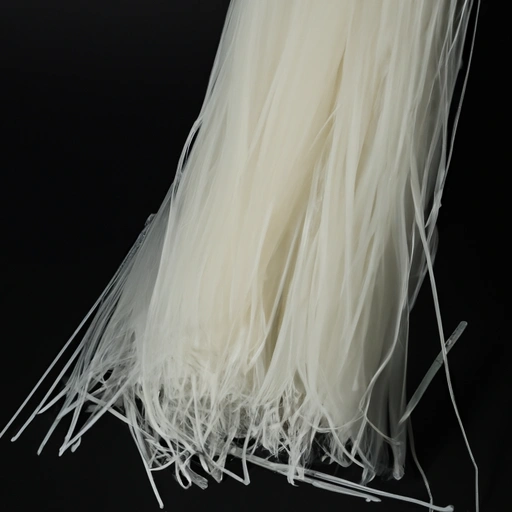Rice Noodle
Description

Rice noodles, also known as rice vermicelli or rice sticks, are a popular ingredient in a variety of international dishes. Made from rice flour and water, these noodles are known for their delicate texture and versatility. They come in different shapes and sizes, from thin angel hair to thicker, flat strands. Rice noodles are a staple in Asian cuisine but have gained popularity worldwide for their gluten-free quality and ease of cooking.
Common uses
Rice noodles are primarily used in soups, stir-fries, and salads. They are a key component in classic dishes such as Pad Thai, Vietnamese Pho, and Singapore noodles. Rice noodles serve as a gluten-free alternative to wheat-based pasta in various recipes, offering a lighter texture and unique flavor.
Nutritional value
Calories
A typical serving of cooked rice noodles (1 cup or about 176 grams) contains approximately 190-200 calories.
Protein
Rice noodles provide about 2 grams of protein per 1 cup serving (176 grams).
Fat
They contain a minimal amount of fat, typically less than 1 gram per serving.
Carbohydrates
Carbohydrates are the primary macronutrient in rice noodles, with around 42 grams per cup.
Vitamins
Rice noodles generally do not contain significant amounts of vitamins; however, some brands may be enriched with additional nutrients.
Minerals
Rice noodles can be a source of minerals like iron and selenium, depending on the brand and enrichment process.
Health benefits
Rice noodles are a good source of carbohydrates and can provide quick energy. Their lack of gluten makes them suitable for those with celiac disease or gluten sensitivity. When paired with a variety of vegetables, lean proteins, and healthy fats, rice noodles can be part of a balanced meal.
Potential risks
As with any food high in carbohydrates, over-consumption of rice noodles without a balanced diet may lead to unwanted weight gain. Their low fiber content compared to whole grain noodles can also be a concern for digestive health.
Common recipes
Recipes that commonly feature rice noodles include Pad Thai, Vietnamese Pho, cold noodle salads, and various stir-fry dishes. They can also be used in spring rolls and as a gluten-free pasta substitute in Italian recipes.
Cooking methods
Rice noodles can be soaked in warm water until they're pliable or cooked briefly in boiling water. They cook faster than traditional pasta and must be handled with care to prevent overcooking and stickiness.
Pairing with other ingredients
They pair well with a variety of sauces, from savory soy and fish sauces to sweet and spicy flavors. Vegetables, herbs, and proteins like chicken, shrimp, and tofu also complement rice noodles well.
Summary
Rice noodles are a versatile food ingredient that's essential in many Asian cuisines and loved for their gluten-free properties. They offer a unique texture, are easy to cook, and can be incorporated into an array of savory and sweet dishes. With their potential health benefits and wide range of culinary applications, rice noodles are a great addition to any pantry.